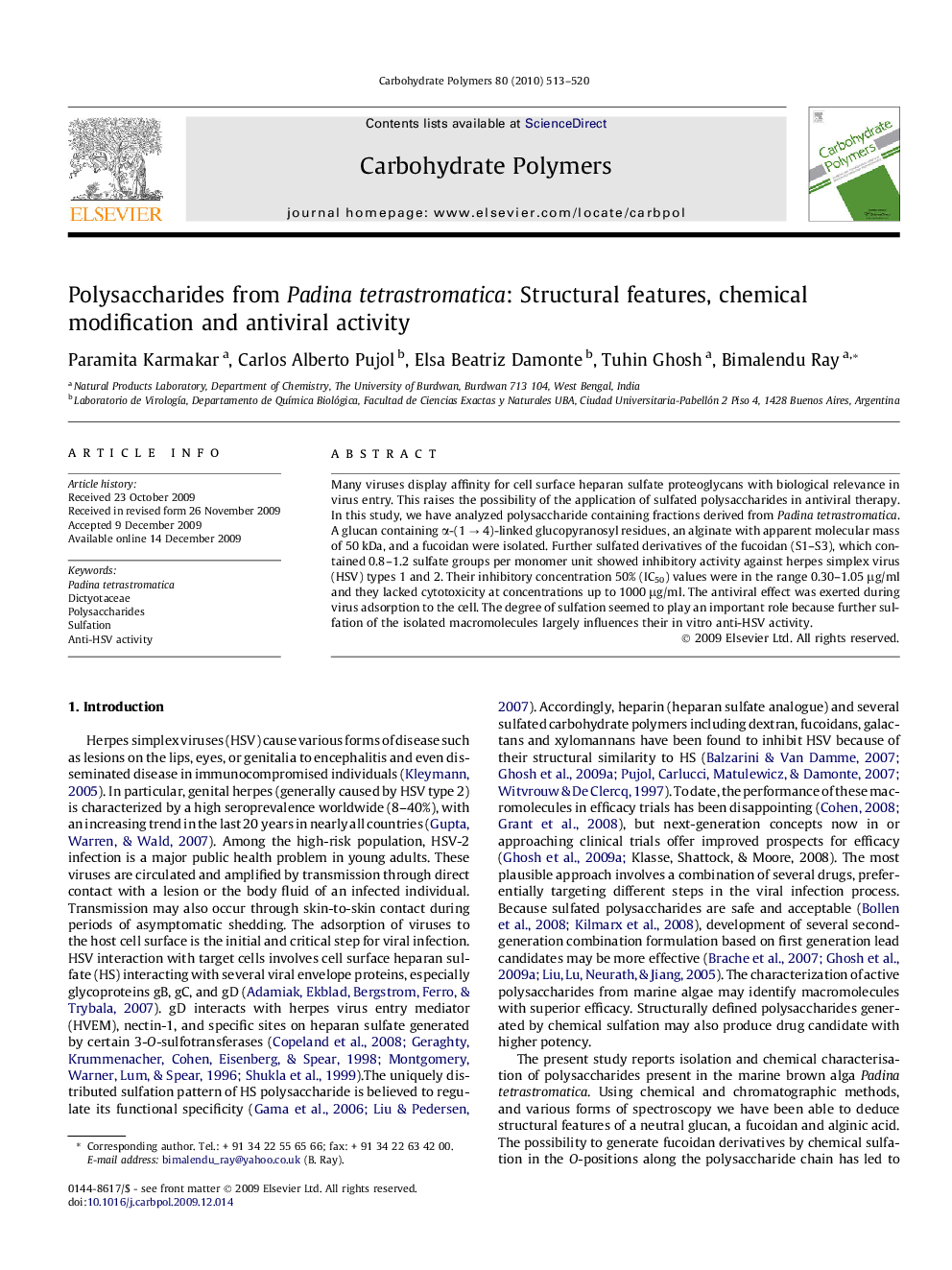| Article ID | Journal | Published Year | Pages | File Type |
|---|---|---|---|---|
| 1377897 | Carbohydrate Polymers | 2010 | 8 Pages |
Many viruses display affinity for cell surface heparan sulfate proteoglycans with biological relevance in virus entry. This raises the possibility of the application of sulfated polysaccharides in antiviral therapy. In this study, we have analyzed polysaccharide containing fractions derived from Padina tetrastromatica. A glucan containing α-(1 → 4)-linked glucopyranosyl residues, an alginate with apparent molecular mass of 50 kDa, and a fucoidan were isolated. Further sulfated derivatives of the fucoidan (S1–S3), which contained 0.8–1.2 sulfate groups per monomer unit showed inhibitory activity against herpes simplex virus (HSV) types 1 and 2. Their inhibitory concentration 50% (IC50) values were in the range 0.30–1.05 μg/ml and they lacked cytotoxicity at concentrations up to 1000 μg/ml. The antiviral effect was exerted during virus adsorption to the cell. The degree of sulfation seemed to play an important role because further sulfation of the isolated macromolecules largely influences their in vitro anti-HSV activity.
